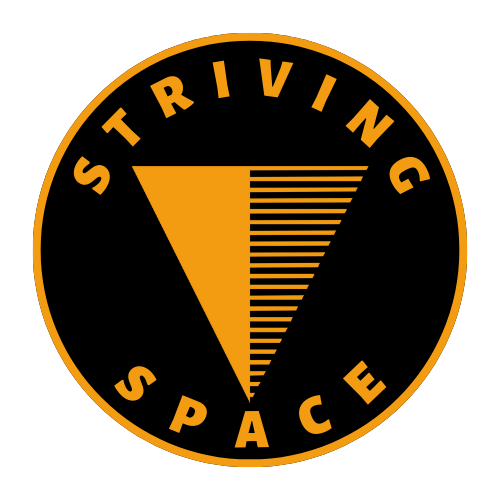HubSpot CRM is a robust software solution that helps businesses to effectively manage their relationships with potential and existing customers. Essentially, it is like a highly advanced address book that simplifies all your customer interactions and assists you in managing your sales pipeline. The best part is that you can start using it for free!
The true strength of HubSpot CRM lies in its capacity to bring your sales and marketing teams together. All team members get access to a clear, shared view of each customer’s journey. This ensures that there are no missed opportunities or miscommunication, leading to a smoother, more targeted approach to convert interested leads into satisfied, loyal customers.
This guide is specifically designed for those who might be new to CRMs or may not be tech-savvy. We will explain HubSpot’s features in simple language, emphasizing the many powerful tools available in the free version to enhance your sales and marketing efforts.
Manage Your Contacts Like a Pro

Disclosure: I may earn a small commission if you buy something through my links in this content. This helps support my work, but my opinions and reviews are independent, not influenced by any affiliate partnerships.
Gathering Your Leads: Transforming Interest into Opportunity
- Website Forms: Your digital storefront requires clear ‘contact us’ points! HubSpot simplifies the process of creating and placing eye-catching forms. You can ask for the essentials to start conversations.
- Social Media: Build relationships rather than simply increasing your follower count. Share valuable content, answer questions, and host engaging contests to collect emails organically.
- Events: Maximize those handshakes! You can scan business cards into HubSpot or have a simple signup form prepared for interested leads.
Understanding the Database: From Chaos to Clarity
Bid farewell to scattered contact lists! HubSpot’s centralized database keeps everything organized, preventing embarrassing duplicate outreach and ensuring your entire team is on the same page. This means smarter decisions: You can see the full picture of each lead to tailor your communication and spot trends for better business decisions.

Understanding Your Leads
HubSpot stores more than just contact information:
- Job Title: Target your pitch to decision-makers or gather intel for a warmer approach.
- Budget: Know if a lead is a good fit, avoiding wasting time on unrealistic proposals.
- Lead Scoring: HubSpot helps you prioritize hot leads based on engagement, allowing you to focus on those most likely to convert.
How segmentation enables better targeting
Segmentation is a powerful tool that helps you target your audience more effectively. Think of it like organizing your closet – instead of a messy pile, you have shirts, pants, and shoes neatly sorted. Similarly, by segmenting your contacts in HubSpot, you can send the right message to the right people at the right time. This allows for personalized communication, such as sending targeted offers, location-specific promotions, or content tailored to their pain points.
HubSpot is an all-in-one contact hub that provides you with everything you need to connect with your audience. It provides you with a range of features to store various types of information, including:
- Essentials: You can store personal details such as names, email addresses, and phone numbers, which are essential to establish a connection.
- Company Info: You can also store information about the company, such as what they do and how big the company is, which can help you understand their needs and personalize your approach accordingly.
- Interests: With HubSpot, you can keep track of the interests of your contacts. This will enable you to deliver relevant and personalized follow-ups.
The best part is that HubSpot’s smart sorting allows you to group contacts by location, industry, and more. This means you can communicate with laser-focus, targeting local promotions, tailoring content to specific pain points, and closing deals faster.
In summary, HubSpot is a powerful tool that simplifies the process of connecting with your audience, allowing you to build stronger relationships and grow your business.
Targeted Communication and Sales Pipeline Tracking with HubSpot CRM

Targeted Emails
HubSpot CRM offers a variety of powerful tools to help you effectively communicate with your leads and track your sales pipeline. With HubSpot’s email tools, you can send personalized messages to your leads based on their location, interests, and other factors.
For example, you can create welcome sequences to introduce new leads to your business, send location-specific offers to contacts in certain areas, and follow up with content based on a lead’s interests. With HubSpot’s segmentation feature, you can tailor your campaigns to each individual lead, making your messages more relevant and engaging.
Track Your Deals
In addition to email tools, HubSpot also makes it easy to track your deals and see where each potential customer is in your sales process. You can customize your pipeline stages to match your specific process and track each deal’s status at a glance.
A simple example:
- Initial Contact
- Demo Scheduled
- Proposal Sent
- Negotiation
- Closed Won (or Closed Lost)
This keeps you organized and ensures that nothing falls through the cracks.
Automate the Boring Stuff
HubSpot can help you automate routine tasks, such as setting reminders to follow up with people, or have HubSpot notify your team when someone takes a specific action on your website. This saves you time and makes it easier to stay on top of your sales process.
- Follow-up Reminders: Never miss a chance to reach out with timely follow-ups.
- Lead Notifications: Get alerts when a hot lead visits your website or fills out a form.
- Stage Updates: Automatically move deals to the next step in your pipeline based on certain actions.

Setting Up Email Campaigns: A 3-Step Recipe
HubSpot is an excellent tool that can simplify the process. Here’s a simple guide to get you started:
- Choose Your Audience: Remember the segmentation magic we spoke about earlier? This is where it comes into play! Select the specific group of contacts you want to target, such as new leads or a specific industry.
- Design Your Message: HubSpot offers a library of pre-built email templates that are already mobile-friendly and visually appealing. You can customize these templates with your own branding and messaging, or even build your own email from scratch using a drag-and-drop editor.
- Schedule and Send: Once you’re satisfied with your email, schedule it to go out at the most optimal time for your audience. HubSpot even offers analytics to help you keep improving and track your campaign’s performance.

Creating a Sales Pipeline that Suits Your Needs:
HubSpot’s pipeline is a visual representation of your sales process. You can easily customize it according to your workflow. Here’s how you can do it:
- Define Your Stages: Break down your sales process into clear, actionable steps such as Initial Contact, Demo Scheduled, Proposal Sent, etc.
- Customize the Pipeline: HubSpot allows you to add, remove, or rename stages to reflect your unique sales journey.
- Set Deal Properties: For each stage, you can define essential information you need to track, such as the estimated closing date and contact person.
Creating Powerful Automation:
HubSpot helps you automate repetitive tasks, thus freeing up your team to focus on high-value activities. Here are a few examples to get you started:
- Automated Follow-Ups: With HubSpot, you can set up automated email sequences to follow up with new leads at specific intervals. This ensures that you never miss a lead and keeps your company top-of-mind.
- Smart Notifications: Get instant alerts when a hot lead takes a specific action on your website, such as downloading a white paper or requesting a demo. This allows your team to follow up immediately, seizing the moment of high interest.
- Automated Deal Stage Updates: HubSpot allows you to eliminate manual data entry by setting up automatic updates. For instance, when a proposal is viewed by a lead, the deal stage in your pipeline can automatically move to “Proposal Reviewed.”
These are just a few ways to leverage HubSpot’s powerful automation features. The possibilities are vast, allowing you to streamline your sales and marketing processes for maximum efficiency. HubSpot’s free automation features can help you achieve this. If you need more advanced capabilities to take your business to the next level, you can opt for the paid plans, which offer additional functionalities.
When it comes to free versus paid plans, here’s what you need to know:
- Free Version: HubSpot’s free CRM provides targeted emails, basic personalization, scheduling, and analytics to track what’s working.
- Paid Plans: If you opt for the paid plans, you can unlock A/B testing, advanced automation based on behavior, and in-depth reports for maximum ROI.
Important Note: Even with the free version, HubSpot CRM provides a strong foundation for communication, tracking, and basic automation. As your business grows and your needs evolve, paid plans offer additional features to scale your sales and marketing efforts to even greater heights.
Know What’s Working (and What’s Not)
Understand Your Data, Drive Results
HubSpot is a user-friendly platform that helps you understand complex information and make informed decisions to achieve better results. With its colorful graphs and charts, you can easily track your key performance indicators and visualize your progress, even if you’re not a numbers person.
HubSpot goes beyond just showing you where your leads are coming from. It helps you uncover which channels are the best at turning visitors into paying customers and which marketing efforts are delivering the best return on investment.
HubSpot empowers businesses with data-driven insights for a competitive edge. This data helps teams make informed decisions, identify areas for improvement, and celebrate wins. By providing the right training and resources, businesses can empower their teams to achieve great results. Plus, HubSpot’s insights and analytics foster healthy competition, motivating everyone to do their best.
Free vs. Paid: What Reporting Tools You Get
When it comes to reporting tools, there is a difference between free and paid versions of HubSpot. The free version offers a solid foundation for analytics and provides the following features: tracking leads, sources, revenue trends, and individual performance. If you opt for a paid plan, you’ll have access to additional features such as creating custom reports, analyzing how specific actions lead to sales, and advanced forecasting tools.
Below are some examples of the reports that you can produce using the free version of HubSpot CRM, along with a brief explanation of how the paid plans can expand the scope of possibilities:
Examples of Reports (Free Version):
- Contacts Created: This report helps you keep track of the number of new contacts added to your database over time. It enables you to identify trends and seasonality in your lead generation efforts.
- Deals by Source: With this report, you can see where your qualified leads are coming from, such as website forms, social media, trade shows, etc. This allows you to double down on your most productive channels.
- Deals by Stage: This report visualizes your sales pipeline. It shows how many deals are at each stage, and whether they are progressing smoothly. Identifying bottlenecks early on is crucial.
- Closed Deals by Owner: This report helps you monitor individual sales rep performance. You can track the value and number of won deals for each team member.
How Paid Plans Enhance Your Analytics:
- Custom Reports: With paid plans, you can create your own reports by combining any metrics that matter the most to your business.
- Attribution Reports: These reports enable you to understand which marketing channels and tactics are driving not just leads, but also revenue.
- Forecast Reports: With these reports, you can analyze your pipeline and project future revenue based on your current deals, which can help you with smarter budgeting and resource planning.
How to Access and Explore Reports
The primary reports dashboard is accessible through the “Reports” tab on your main HubSpot navigation. From there, you can explore pre-built reports, customize them, or use HubSpot’s library for inspiration when building your own.
Tip: Try setting a recurring time to review your reports (e.g., weekly or monthly) to stay on top of your progress and identify areas to optimize.

HubSpot Tools to Make It Happen
HubSpot CRM is an effective tool to optimize your sales and marketing process. It offers several powerful features that can help you achieve your goals, even within the free version. Here are some of those features:
- Forms: You can easily design custom forms that blend seamlessly with your website. By asking the right questions and keeping the form short and sweet, you can capture valuable lead information. HubSpot’s drag-and-drop builder is easy to use and can help you create forms in no time.
- Workflows: HubSpot CRM allows you to create automated sequences that will save you a lot of time. You can welcome new leads with a series of introductory emails, send follow-up reminders based on specific time intervals, or get your team notified when a lead takes key actions on your website.
- Meetings: You can let your prospects book consultations or demos directly through your website, eliminating the need for back-and-forth emails. HubSpot syncs with popular calendars to avoid scheduling conflicts, creating a smoother customer experience.
- Live Chat: You can engage with website visitors in real-time, answer their questions, and guide them towards becoming a lead. This chatbot allows you to build rapport and offer instant help when potential customers are most interested.
- Ticketing (If applicable): If you provide customer support, HubSpot’s ticketing system ensures that no request falls through the cracks. You can easily track, assign, and prioritize support tickets to create a seamless experience for your customers.
Starting with one or two of these tools can be a good idea. Once you have mastered them, you can gradually add more to your workflow.

Tips for Success with HubSpot CRM
HubSpot CRM is an incredibly powerful tool for managing customer relationships, streamlining your processes, and boosting your bottom line. However, to get the most out of it, you need to put in some initial effort. Here are a few tips to help you succeed:
- Train your team: Invest in proper training for your sales, marketing, and customer service teams. HubSpot offers a range of excellent resources and online courses to help you get started. With a well-trained team, you can fully leverage the tools and realize the benefits of a centralized system.
- Check your data: HubSpot’s analytics are like superpowers. Regularly review your reports to identify what’s working well, spot areas for improvement, and use this data to guide your strategies and decision-making.
- Grow over time: Start with the core features that address your most immediate needs. As you get comfortable with HubSpot CRM, gradually explore its more advanced functionality. This steady approach prevents overwhelm and maximizes long-term success.

Final Thought
HubSpot CRM is a powerful tool that can transform how you manage customer relationships, simplify your workflows, and increase your profits. By utilizing its built-in organization, targeted communication features, and advanced analytics – even with its free version! – you can set your business on the path towards sustainable growth.
Start by tackling one area at a time, such as lead generation, email campaigns, or pipeline management. Celebrate small wins, build on your momentum, and soon HubSpot CRM will become an indispensable part of your sales and marketing strategy.
Not sure where to start? Request a free demo of HubSpot’s Customer Platform and discover enterprise software for marketing, sales, customer service, content management, operations, and commerce. Fill out the form, and a HubSpot professional will contact you to create a personalized demo.

Good luck!











